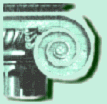
|
|
MARC21-fin or MARC21 - that is the questionThere is no one single reason for changing the national cataloguing format, nor is there a best possible solution. In this article Juha Hakala discusses how and why the decision to change - or not to change - the format has been made in various European countries. After that he describes how libraries in Finland are currently preparing for this process. For futher information, please, contact:
Metadata for metasearchNISO (National Information Standards Organization) Metasearch Initiative has during the past couple of years prepared a set of standards and other quidelines for information retrieval portals and other metasearch applications, i.e. systems that enable simultaneous searching in several remote databases. On the 1st of November 2005 two important drafts for metadata formats were released, Collection Description Specification (Z39.91-200X) and Information Retrieval Service Description Specification (Z39.92-200X). Together these two documents define how information retrieval systems and collections should be described, and how these descriptions are linked. Thus they form a firm basis for transferring metadata from one portal application to another, or even from an information retrieval portal to a library system OPAC or vice versa. The author of this article is the chairman of the NISO committee that drafted these standards. For futher information, please, contact:
Metadata format for electronic thesesHelsinki University Library started to plan the metadata format for electronic theses in the late 2004. Because there was a wider need for the format, co-operation with other institutions of higher learning was started and the format became a national one. The format is based on Dublin Core with some additional rules. Dublin Core was chosen because it is a well-known metadata standard for describing electronic resources and because OAI-PMH and many programs, including ENCompass, support it. There are 23 fields in the latest version of the format. Six of these fields are mandatory while the rest of the fields are optional. At the moment, the format is in use in several collections in the ENCompass. The University of Helsinki will start using the format at the beginning of 2006. Common metadata for electronic theses also creates new opportunities. For example, one vision of the future could be some sort of a joint national search for theses from different institutions. For futher information, please, contact:
Why ontologies are needed to replace thesauri?Traditional thesauri are built for humans, especially those indexing information. Therefore there is room for interpretations in the semantics of the terms. The theasauri are, however, nowadays used also by IT applications. New and important fields include e.g. the semantic web and web services. Because computers lack the human hidden knowledge and ability to interpret, the terms in vocabularies have to be defined more precisely as ontologies. This article presents a simplified model for converting a traditional thesaurus into a semantic web ontology. This model has been developed, for example, in the Museum Ontology project and it has also been succesfully piloted in several semantic portal projects. The model is being tested in the FinnONTO project, which is, among other things, converting YSA, the Finnish General Thesaurus, into a simple ontology. For futher information, please, contact:
FRBR and FRANAR - two visionsFRBR, (Functional Requirements for Bibliographic Records) is the new way to organise contents. It has been developed since the beginning of the 1990s, by devoted and farseeing librarians. Together with FRAR (Functional Requirements for Authority Records), it will form the ”new bibliographical universum”. FRBR and FRAR are expected to be very important new tools to raise the service level of libraries in the virtual environment in the future. The author of this article is a member of the IFLA Cataloguing Section and has been active in developing the FRBR model. She was also one of the organisers of the IFLA 2005 satellite meeting Bibliotheca Universalis - how to organize chaos? which was held in Järvenpää, Finland, in August. The subject of the meeting was FRBR and FRAR. For further information, please, contact
The new ISBNThe fast expansion of publishing in general and the inclusion of new electronic forms of publications in the ISBN system have radically reduced the number of ISBNs available in the world. The supply of ISBNs and the need for a new kind of ISBN have been widely discussed in the past few years, and as a result the ISBN system has been completely revised. The ISBN code will change from 10 digits to 13 digits from 1 January 2007. All existing unused 10-digit ISBNs will be converted to the13-digit format. The new code will be prefixed with the Bookland EAN 978 code and the check digit recalculated. This change will also affect library catalogue systems, which will have to be able to handle two kinds of ISBNs in the future. For further information, please, contact
|
|
|
Tietolinja 02/2005 |
|
